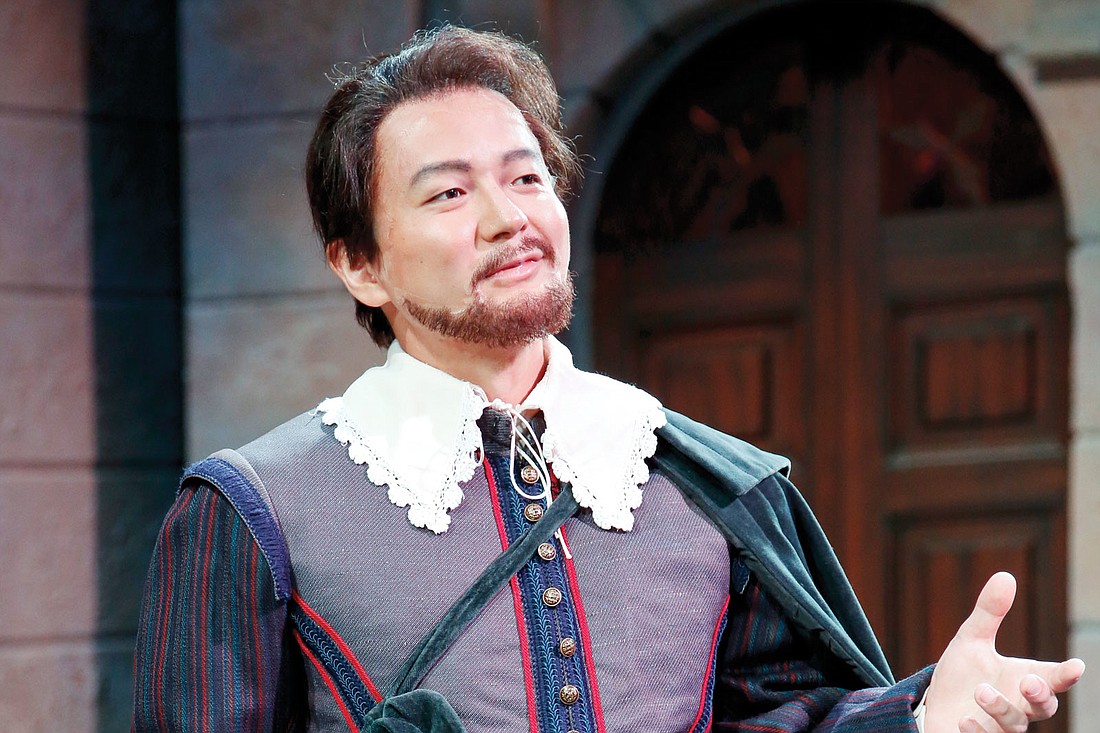- November 27, 2024
-
-
Loading

Loading

Leaving the Sarasota Opera’s opening-night production of Verdi’s “Rigoletto” last week, I found myself humming “Tradition,” from “Fiddler on the Roof.” An odd thing to find its way into my head? Not at all.
Sarasota Opera, under the artistic leadership of Victor DeRenzi, has been making its way through the entire catalog of Verdi’s output, making sure every production has included every note the composer wrote, in the exact way he intended them to be. Verdi, who is approaching his bicentennial, will probably make every effort possible to return to thank DeRenzi for his enormous attention to detail and scholarly insistence on the composer’s original intent.
The company’s “Rigoletto,” reworked from the 2008 production, is a study in perfect re-creation of the 1851 masterpiece, so, if you want a glimpse into the past, this is the production for you. Take Gilda’s famous Act 2 aria, “Caro Nome.” Performance practice over the past 75 to 100 years has added roulades and runs for the soprano, taking her up to a high D-sharp in the cadenza or, in the case of a few coloraturas, ending the aria on a high E. Verdi didn’t write it that way, but our ears have become accustomed to those practices.
Speaking of tradition, it used to be a practice to omit entirely the duke’s Act 3 aria, “Possente Amor.” Then it found its way back onto the stage but only with one verse. Verdi wrote two verses, and Sarasota Opera included both. One of opera’s best known and beloved arias, “La Donna e Mobile,” which is usually heard with at least one brilliant tenor slicing his way to a high B (think of The Three Tenors taking it on several years ago), wasn’t written that way. So, DeRenzi held the reins tight — as the composer ordered — and didn’t let the tenor strut his stuff until, as written, he was off stage with that note disappearing into the distance.
There is no judgment to make on this. As a former singer and active audience member, there are times I like to hear the singers showing off, but it has to be done well, with good taste and dramatic awareness. I also love the scholarship that goes into hearing what the composer originally intended. Most important are the performances. And this “Rigoletto,” although somewhat careful — something I chalk up to opening-night jitters — was well sung and well staged.
Stephanie Sundine, the director, had a firm handle on details, from the way the duke snuck into Rigoletto’s house in Act 2, to the beautifully staged quartet in the last act, keeping Gilda and her father outside and unseen by the hired assassin, Sparafucile, and his sister, Maddalena. Occasionally, one could have hoped for more reactions to the text from the chorus members and even the leads but, for the most part, the action fit the production.
David P. Gordon’s sets and Ken Yunker’s lighting were effective and, especially in the final scene, added to the drama unfolding on stage. As always, Howard Tsvi Kaplan’s costumes were opulent and attractive.
Of the fine singers, Hak Soo Kim, as the duke, was a special standout. He has a brilliant voice with a top that spins long phrases with ease. Marco Nistico was a believable Rigoletto, keeping his even baritone in line with the paranoia of the character he portrayed. Eleni Calenos, in her Sarasota Opera debut as Gilda, has a beautiful lyric voice in the middle and bottom ranges, but tends to get edgy toward the top. Still, she was both poignant and strong throughout her performance.
Young Bok Kim, a regular with the company, was vocally and dramatically a chilling assassin, and his sister, played by the luxuriously voiced mezzo Heather Johnson, aptly left behind her former roles with the company as Cinderella, Hansel and Elizabeth Proctor, and turned into the whore-with-a-heart she needed to be as Maddalena. Apprentice and Studio Artists did well in smaller roles.
The Sarasota Orchestra played a large role in this opera. Performing from the pit, they were able to show their versatility and range as a group and as individuals.